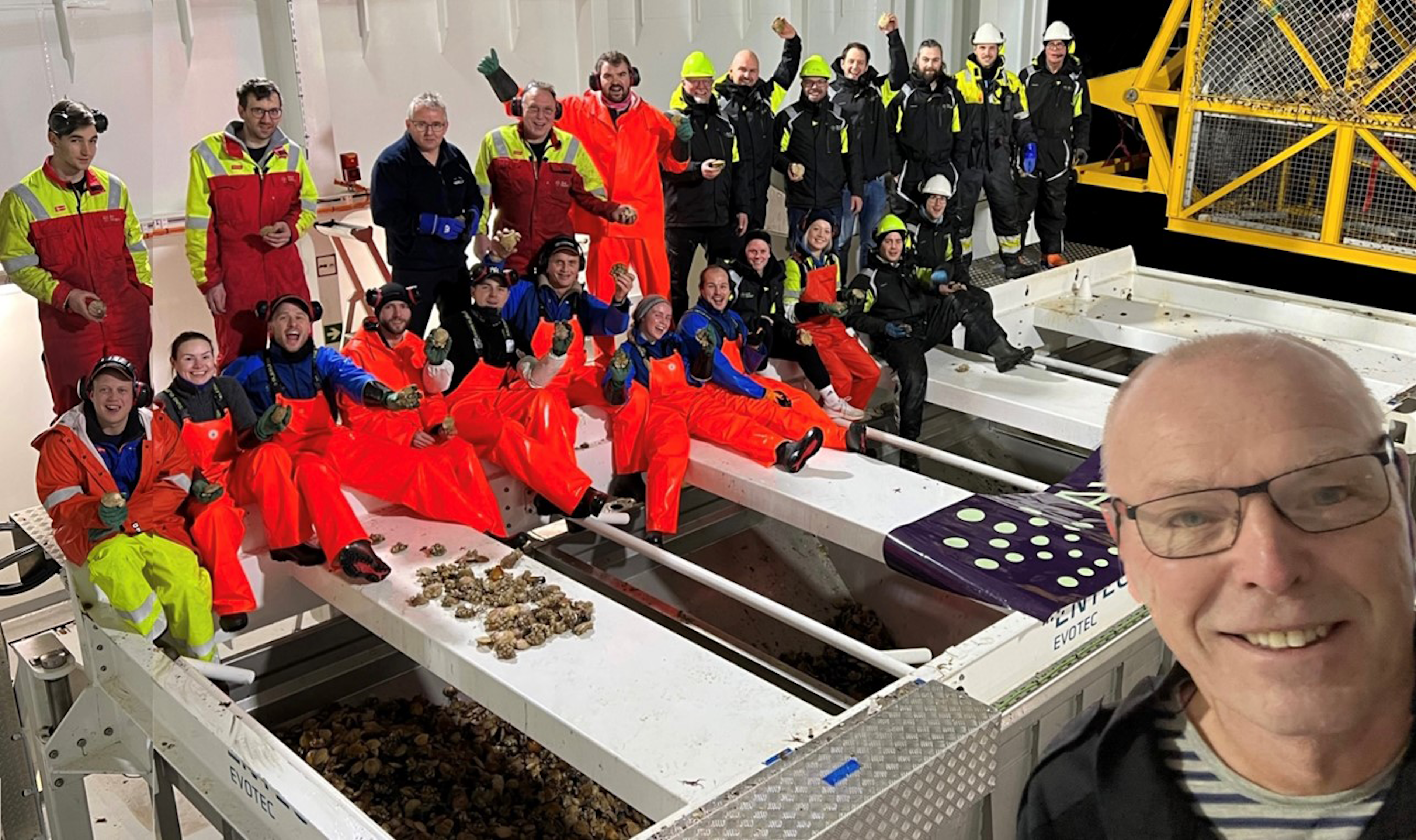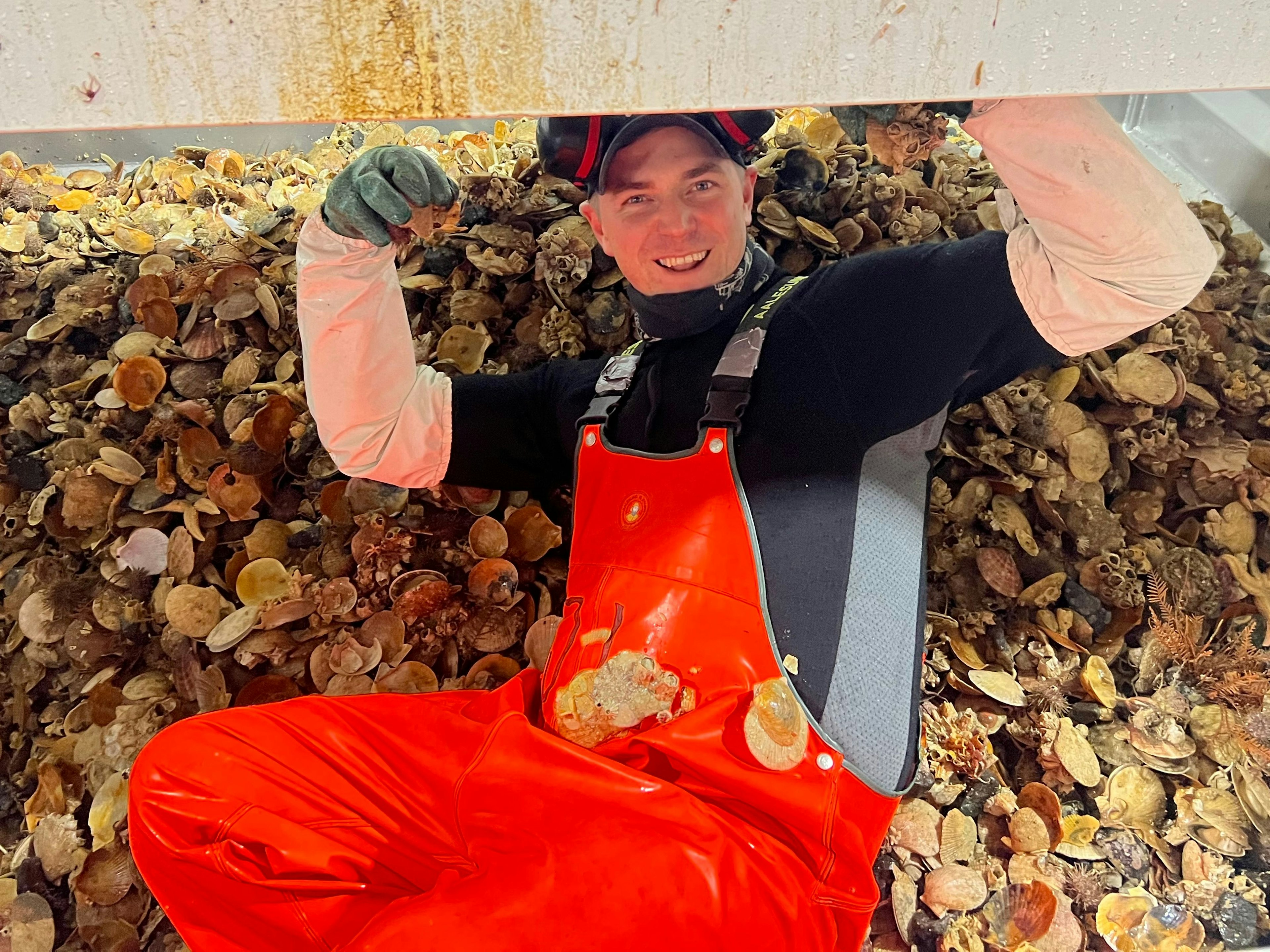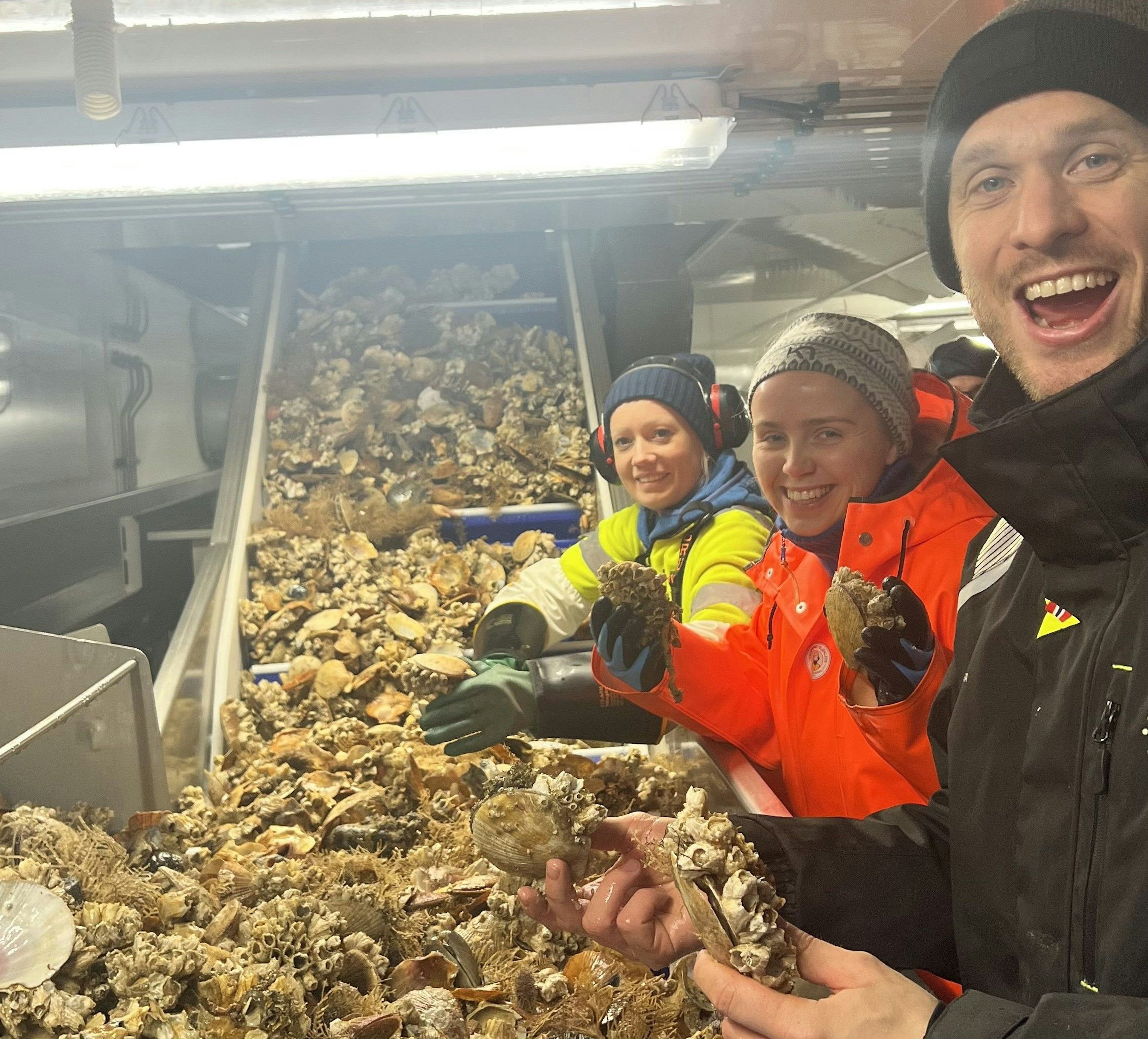Harvesting success for world’s first non-invasive seabed fishing gear
Ava Ocean and its Arctic Pearl can confirm the success of the full scale commercial version of their non-invasive seabed harvesting technology, after completing their first test run in the Barents Sea this Christmas.

«The atmosphere onboard was euphoric when we in the small hours of little Christmas Eve brought onboard the first basket of Arctic scallops. Despite the bad weather, the fishing gear worked on first try and picks shells gentry and efficiently in their thousands, with hardly any bycatch,” says Øystein Tvedt, CEO in Ava Ocean.
He was himself part of the crew on this maiden voyage on the newly refitted Arctic Pearl, a former oil service vessel, but now the first in the world to sport Ava Ocean’s revolutionising fishing technology. Thanks to the documented gentleness of the harvester, Ava Ocean has been granted the first commercial licence to fish Arctic scallops (Chlamys Islandica) in Norway for more than 30 years.
On its two-week long test fishing trip into the darkness of the Barents Sea, the crew of 25 had to deal with both challenging weather conditions and being apart from loved ones during the festive season.
“I couldn’t have been anywhere else this Christmas. This is a moment we have been working towards for many years and it has been amazing to be a part of the fishing crew on this first voyage”, says Tvedt.
Scallop grounds “the stuff of legends”
The first basket of scallops was brought onboard in the small hours of 23rd December, but it would be another couple of days before the Arctic Pearl really hit the scallop shaped jackpot. That is when the ship came across some of the really big scallop grounds, the stuff of those legendary tales still told in the Norwegian seafood industry from the scallop gold-rush days of the 80s.
“Our technology enables precision harvesting, so when we came across one of these scallop grounds we have heard so much about from the 80s, it practically overflowed with scallops onboard as the baskets were brought up. That really was fun,” says Tvedt.

New fishery – New technology – New chapter for sustainable seafood
With this first test trip in the Barents sea the fishery for Norwegian Arctic scallops is officially reopened. It is a historical milestone for Norwegian fishery management, but potentially also for the seafood industry focusing on seabed dwelling species outside of Norway.
“It feels fantastic to finally show to the world that it is possible to pick shells efficiently but gently from the sea floor, and that the technology we have developed works a treat in the challenging conditions of the Barents Sea,” says Tvedt.
Shell-harvesters a success – factory onboard needs improvement
While Ava Ocean’s fishing gear proved to be both gentle and efficient, it was not all plain sailing for the Arctic Pearl on its maiden voyage.
“December is far from an optimal month in a place like the Barents Sea, and when starting a new fishery and testing new systems there are a lot of things that need to function in unison, especially in the onboard factory. We discovered that the way production is set up at the moment is unable to keep up with the efficiency of the harvesters, and we need to make some adjustments at shore before heading out again”, says Tvedt, praising the crew for their hard work on this first trip.
“They have been absolutely brilliant. Their drive, spirit and ability to problem-solve under pressure has been crucial for the success of this journey. I am so thankful they are all a part of Ava Ocean,” says Tvedt.
New delicacy in the Norwegian seafood portfolio
When the Arctic Pearl now returns to home port Ålesund, it is with frozen-at-sea scallops product samples onboard.
“These samples will now be distributed to important potential customers around the world, and we are excited about the reception. Based on their feedback we will be able to optimise production considering quality and sorting. Moving forward, we are confident that these scallops can become an important contribution to the Norwegian seafood export portfolio”, says Bernt Rogne, Head of seafood in Ava Ocean.
Ava Ocean has partnered with Hofseth International to sell its scallops.
Long term goal of sustainable fishery without harming the seabed
Ava Ocean’s unique seabed harvester has been developed in collaboration with SINTEF, and thanks to its documented low impact on the benthic sediment and low bycatch rates, the company has been granted the first commercial licence for Arctic scallops in Norway since the early 90s.
Due to inadequate regulation and destructive fishing gear, the fishery for Arctic scallops in Norway collapsed in the 90s and dredging has since been banned in all Norwegian waters.
Thirty years later, the Norwegian Institute for Marine Research has started mapping the populations of Arctic scallops and deemed it restored to health and ready to be harvested from, if using non-destructive fishing gear. Ava Ocean has thus been granted a 5-year commercial licence of 15,000tonnes per year.
“The goal is to use these years to document how our technology doesn’t cause ill effects on the ecosystem on the seabed, and to develop a long term sustainable fishery for Arctic scallops in Norway. If we do this right, it can mean a whole new way of giving the world sustainable access to the delicacies on the seabed,” says Tvedt.

Share article
Posted in News